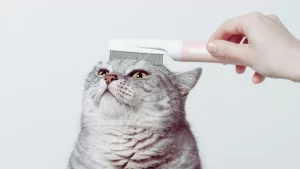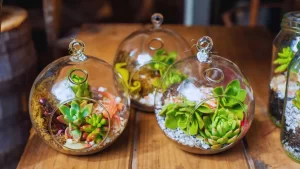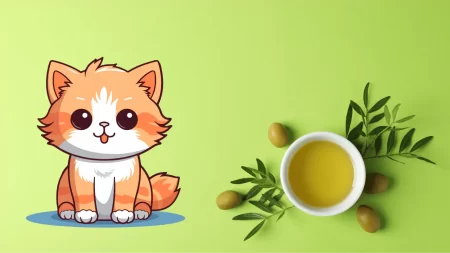Cats need food, but which type? Wet or dry? This article will help you make the right decision. Here’s what it covers: nutrition, cost, and ease of use. Ready to learn? Let’s go!
Deciding on wet or dry cat food is a hard choice pet owners must face. Cats have unique nutrition needs, so it is important to give them the best diet. To make this decision, you need to know the nutritional differences between wet and dry cat food. Then, decide which type is perfect for your cat’s needs.
Wet cat food is soft and often sold in cans or pouches. It has a high moisture content and is easier to digest. Wet cat food has more protein, is usually of better quality, and contains more vitamins, minerals, and amino acids than some types of dry food.
Dry cat food is usually in bags or pouches and is easy to store. Kibble has a longer shelf life and fewer impurities because it goes through high-temperature processing. Plant proteins like soybean meal or corn gluten meal give additional nutrition for cats who don’t get enough exercise. Dry food can also be fortified with vitamins, minerals, and amino acids to give cats of all ages better health benefits.
Pros and Cons of Wet Cat Food
The wet vs. dry cat food debate has been going on in the pet world for years. Is it really worth it though? Wet food has loads of advantages, like superior hydration, more protein, and more vitamins and minerals. But, there are some disadvantages too. Knowing the benefits and downsides of wet cat food is key before making a decision about your kitty’s diet.
Benefits of Wet Cat Food:
- Easier to digest – The extra water in wet meals helps cats take in more moisture than with dry kibble.
- Tastier – The extra moisture in wet food makes it delicious, with lots of health benefits.
- More nutrients – Wet foods have higher levels of protein and essential vitamins and minerals.
Cons of Wet Cat Food:
- Costly – More water means wet food costs more per pound than kibble.
- Fewer storage options – Stocking up on wet food can be costly and hard to manage if you need a lot of it. That’s why some households stick to dry food.
Pros and Cons of Dry Cat Food
Dry cat food is a popular choice for pet owners. It’s easy to store and offers cats some benefits over wet food. Dry food keeps teeth clean, as its crunchy texture is like a toothbrush! Plus, it’s digested faster than wet food and is calorie-dense – perfect for cats who want to gain weight.
But there are drawbacks. Dry food can lead to constipation and isn’t as tasty for picky cats. And too much can cause weight gain. Monitor intake and make sure your cat is getting enough nutrients – but not snacking too much!
Nutritional Comparison
| Nutrient | Dry Cat Food | Wet Cat Food |
|---|---|---|
| Moisture | 10% | 70% |
| Protein | 30-45% | 7-12% |
| Fat | 10-25% | 4-6% |
| Carbohydrates | 20-50% | 2-5% |
When selecting food for your feline friend, wet and dry options both offer needed nutrition. But there are differences. Wet food has a softer texture which can be easier to eat, especially for elderly cats or those with dental issues. It’s also typically lower in fat and higher in moisture content compared to kibble. This can help keep overweight cats healthy and help prevent urinary tract disease.
On the other hand, dry food is more convenient. It doesn’t require refrigeration and has a longer shelf life. Plus, it usually contains more carbs. Eating dry kibble can help keep teeth and gums healthy. Many dry pet foods are vitamin-packed and have prebiotics that aids digestion. Grain-free formulations are available for pets with sensitivities or allergies to grains.
Cost Comparison
According to a comparison by veterinarians, ounce for ounce, dry cat food is typically more budget-friendly than wet cat food. Plus, the long shelf life of kibble means less waste. Wet or canned cat food is generally more expensive than dry food. For example, while 6.3 lbs of Friskies Indoor Delight dry food is $7.18 from Walmart and typically lasts a month, 12 5.5 oz meals of Friskies pate canned cat food costs $5.48 from the same store. However, it’s important to note that more expensive than any food is the veterinary visits following an inappropriate diet that disregards a cat’s age, lifestyle, or medical history.
Veterinary Recommendations
Vets have diverse views on the matter, so it’s wise to study and see what will work best for your pet.
Wet food has more benefits than dry since it has more water. It can help cats who have bladder and urinary tract issues, or senior cats who have trouble chewing.
Dry food has its own advantages, like being easy to store since it doesn’t need refrigeration. And cats can graze throughout the day. Also, some dry foods keep teeth clean as they crunch through their meals. However, brushing teeth daily may be necessary if you feed wet food.
Both diets have pros and cons. Speak with your vet to decide your pet’s best diet plan.
Feeding Guidelines
Feeding your cat is a must. Give them two meals a day. Pick food that has the right number of calories for their activity level and body condition. Both wet and dry cat food can provide balanced and complete nutrition.
- Wet food contains more water to make sure the cat stays hydrated.
- Dry food helps keep the teeth clean when chewed. It’s best to have a mix of both.
Check with your vet for more specific advice. Generally, canned food should be 1/3 to 2/3 of their daily calories. Read the ingredients list and talk to your vet if you have questions.
How does the production process of wet cat food differ from that of dry cat food, and how does this affect the quality of the food?
Manufacturing variances have an impact on the quality of wet versus dry cat food. Wet food typically contains a higher moisture content of 60% to 87% compared to dry food. The manufacturing processes differ with wet food being created through retort processing, and dry food through extrusion, which affects texture and taste. Wet food is generally more agreeable and digestible to some cats, but is also more expensive due to its complex manufacturing process. Both wet and dry cat foods can be nutritionally complete and balanced for optimal cat health. However, it’s important to acknowledge that individual cats may have distinct dietary needs and preferences.
How does the texture of cat food affect dental health, and which type of food is better in this regard?
Feline dental health can be significantly impacted by the texture of their food. While wet cat food is favored by cats for its palatability and smoothness, it can become lodged between their teeth and contribute to plaque accumulation and tooth decay. Conversely, dry cat food requires more chewing, promoting plaque removal and reducing the risk of dental issues. Consequently, dry cat food is commonly recommended for maintaining healthy teeth and gums. Nevertheless, pet owners must ensure that their cats have access to adequate water to prevent dehydration and wash down the dry food. In conclusion, selecting the appropriate texture of cat food is crucial for preserving their dental health, and dry cat food is usually the preferred choice.
Summary
Selecting the right cat food for your pet can be tough! Two popular kinds of cat food are dry and wet. Each has its own pros and cons.
- Dry cat food is easy to store and often cheaper. It also helps keep teeth clean by reducing plaque and tartar. But, it can have more carbs than wet food, and may not be as nutritious in terms of vitamins, proteins, and other nutrients.
- Wet cat food offers more moisture, and often contains more meat-based proteins which cats like. It may be better for them health-wise but requires refrigeration or freezing when purchased in cans or pouches. Plus, it needs to be cleaned up after meals as it will spoil faster than dry food.
When selecting cat food, think about the cost, nutrition, convenience, and medical issues. All these factors should be taken into account before buying.







